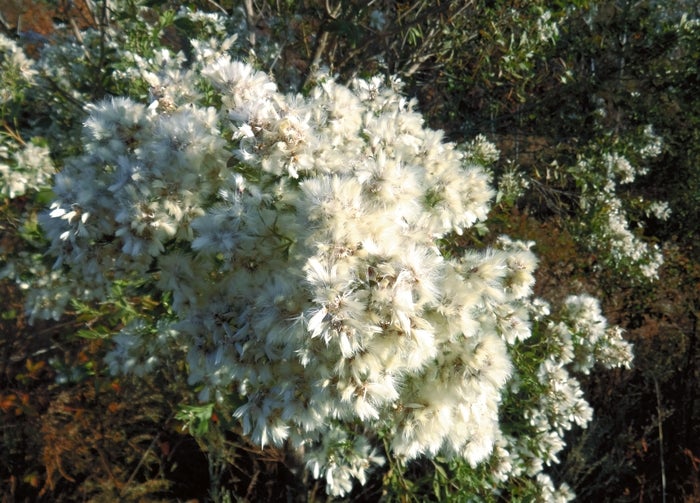Darrell Blackwelder: Be careful with silverlings and don’t prune lantana
Published 12:00 am Friday, November 21, 2014

- Cooperative Extension. Silverling has attractive blooms, especially in the fall, but it's a problematic plant.
Cold weather has officially arrived. Many are coping with problems often associated with the cold blast of weather experienced earlier this week. Below are a few questions posed to Cooperative Extension over the past few weeks.
Question: There are a small trees or shrubs blooming along sides of the road with small white flowers. What type of plant is this and can you buy them?
Answer: The plant you have described is a silverling shrub/tree (Baccharis halimifolia). These plants often form dense thickets in open areas along roadways or abandoned fields. The plant is considered a trash tree of no economic or aesthetic value for most landscapes and has also been placed on the watch list as a possible invasive species. But, the outcast native does have a redeeming value as a salt tolerant hedge or screen in coastal or flooded areas. It has been successfully used in difficult areas as a small specimen tree or as a shrub border. From a distance, the plant does possess aesthetic value, especially in the fall. If you have livestock, remove it from your pastures. The shrub is one of our most dangerous to cattle, ponies, poultry and sheep. Death occurs when these animals eat large quantities of the plant. Go to http://harvest.cals.ncsu.edu/applications/plant_biology/poisonous/plants.cfm?ID=92 for more details about the plant.
Question: Our lantana is completely dead after the big freeze earlier this week. I was considering pruning out the dead limbs, but I seem to remember that you’re not supposed to prune them back until the spring after they begin to leaf out. Is this correct?
Answer: Yes, unfortunately it’s best to wait until spring before pruning. If you prune them back now, water often collects in the hollowed cut stems, causing the crown of the plant to decay over the duration of the winter. It’s best to wait until new growth occurs at the base of the plant in the spring and prune them back to the ground. Go to http://pitt.ces.ncsu.edu/2006/06/lantana/ for more detailed information about growing lantana in North Carolina.
Question: I want to help the birds during the winter, especially my bluebirds. What can I do to help feed them this winter and keep them in my yard?
Answer: Bluebirds eat insects in the spring and summer but in the winter bluebirds eat berries. Bluebirds are attracted to berries of hollies and dogwoods. Beautyberry, elderberry, mulberry are also native plants that are another food source. It would be great if you could incorporate hollies and dogwoods into your landscape if possible. More information can be found at the official NC Bluebird website:http://www.ncbluebird.com/




